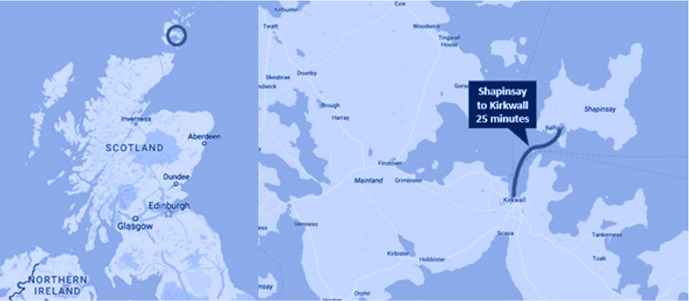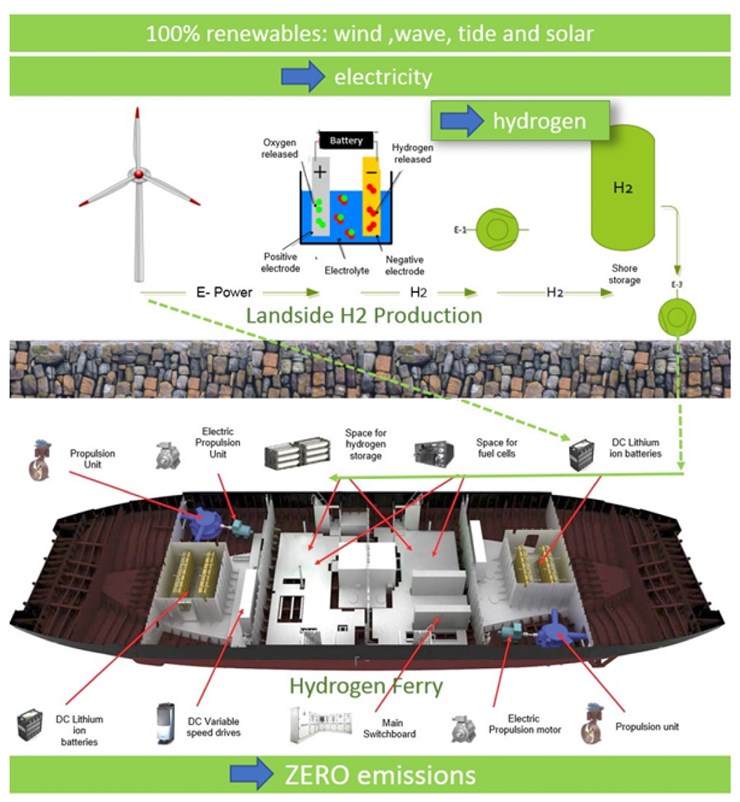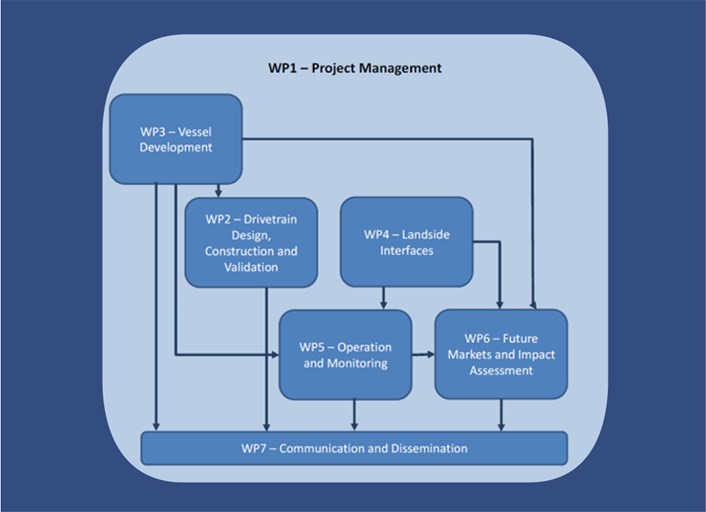HySeas III is the final part of a three part research program that began in 2013 looking into the theory of hydrogen powered vessels (HySeas I), followed by a detailed technical and commercial study to design a hydrogen fuel cell powered vessel (Hyseas II 2014-2015).
HySeas III builds on the first two parts by aiming to demonstrate that fuel cells may be successfully integrated with a proven marine hybrid electric drive system (electric propulsion, control gear, batteries, etc), along with the associated hydrogen storage and bunkering arrangements. The project will do this by developing, constructing, testing and validating a full sized drive train on land. Should this test be successful, it is hoped to move on to build that knowledge and knowhow into a ferry.
The fuel cell units to be employed are currently in service, delivering proven and reliable zero-emissions road transport for over ten years - in an expanding fleet of over a hundred fuel cell buses in Europe and beyond. The PEM fuel cell modules to be employed in HySeas III have in some cases reached over 30,000 operating hours.
The expected route to be the recipient of this innovative vessel will be Kirkwall to Shapinsay, in the Orkney Islands, located to the north of Scotland.

Orkney benefits from significant renewable energy resources, in the form of wind which is exploited through wind turbines. Also through tides and waves which are exploited through the test sites of EMEC – the European Marine Energy Centre which is located in Orkney. As Orkney’s connection to the national power grid network on the mainland is limited, excess renewable energy cannot currently be exported and would otherwise be wasted.
The islands have been at the forefront of developing technology to use hydrogen as a storage medium; directing the excess renewable energy into electrolysis of water to produce hydrogen which is then stored under pressure, and used for power generation, heat and local transport. This means that both production of the fuel and use of the fuel has no harmful emissions – GHG, SOx, NOx, or particulate matter. Using the hydrogen as a fuel produces only water as a by-product.





